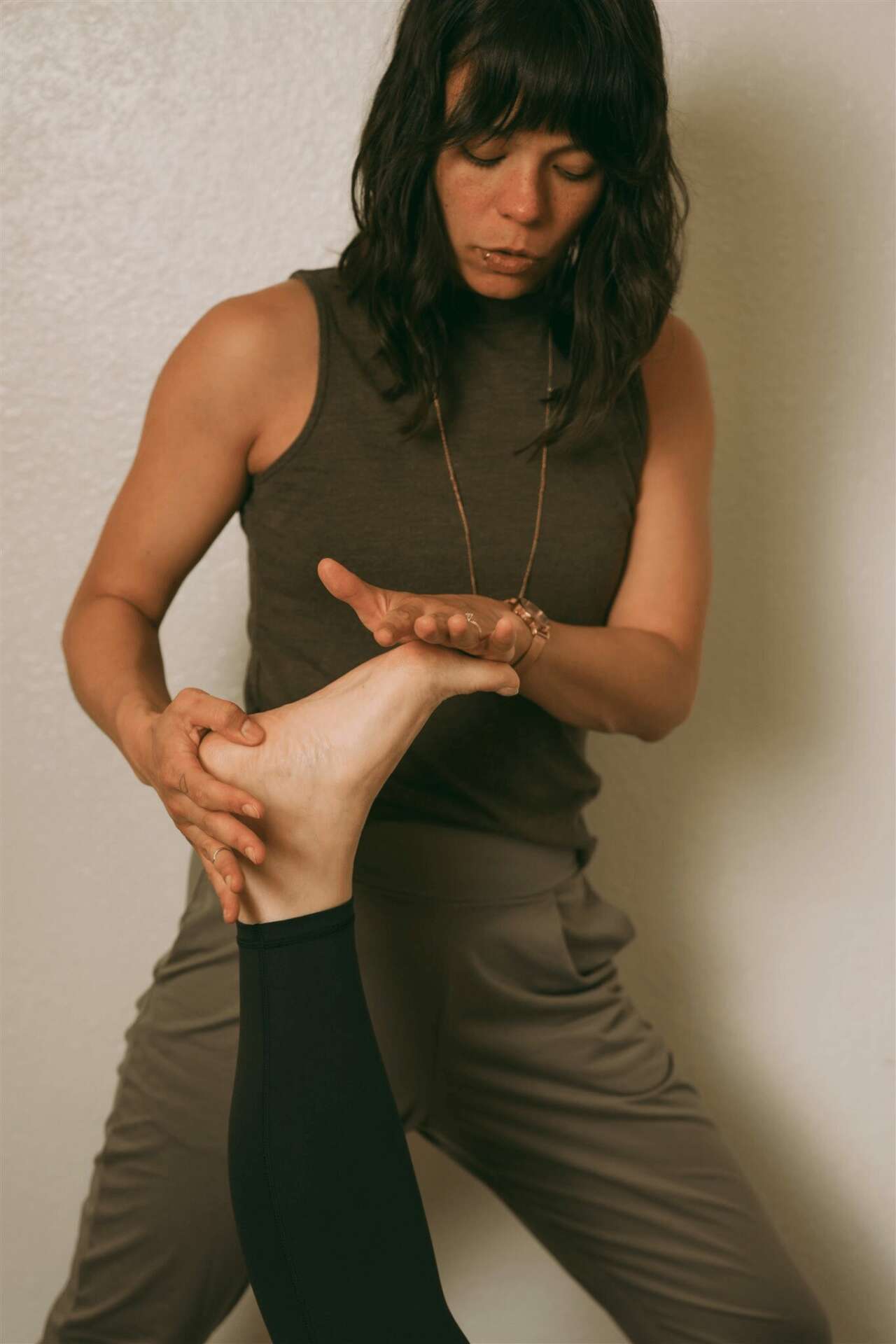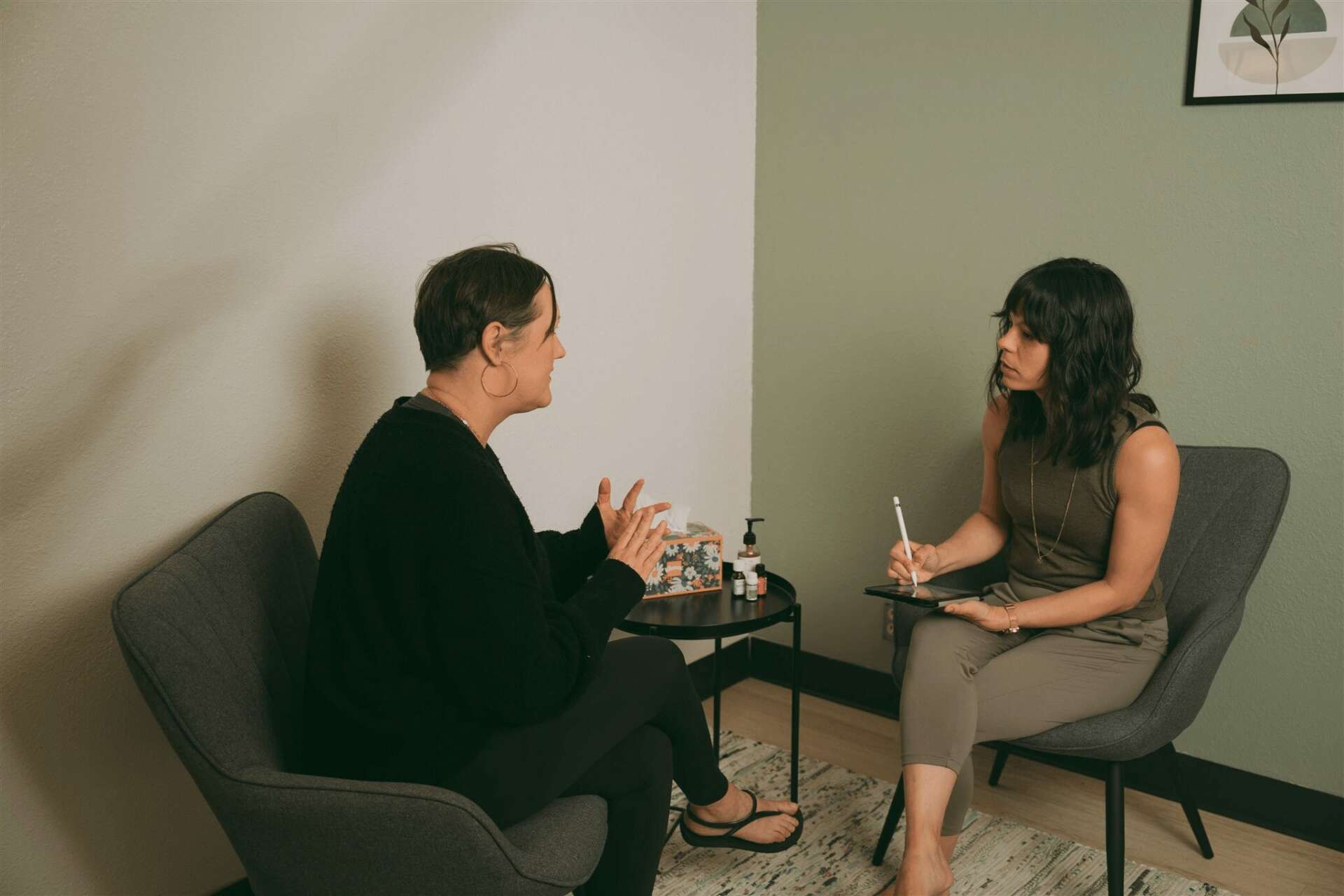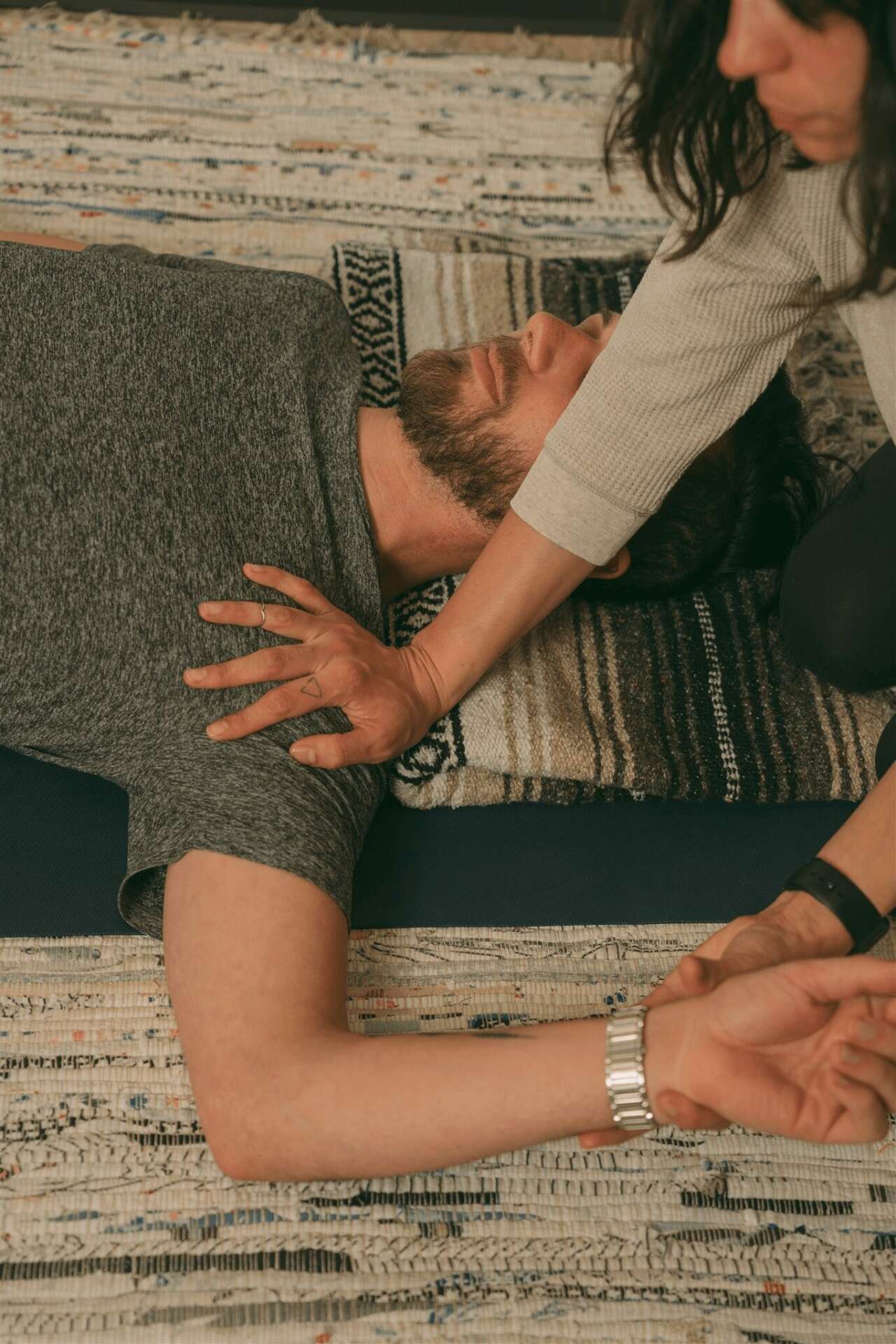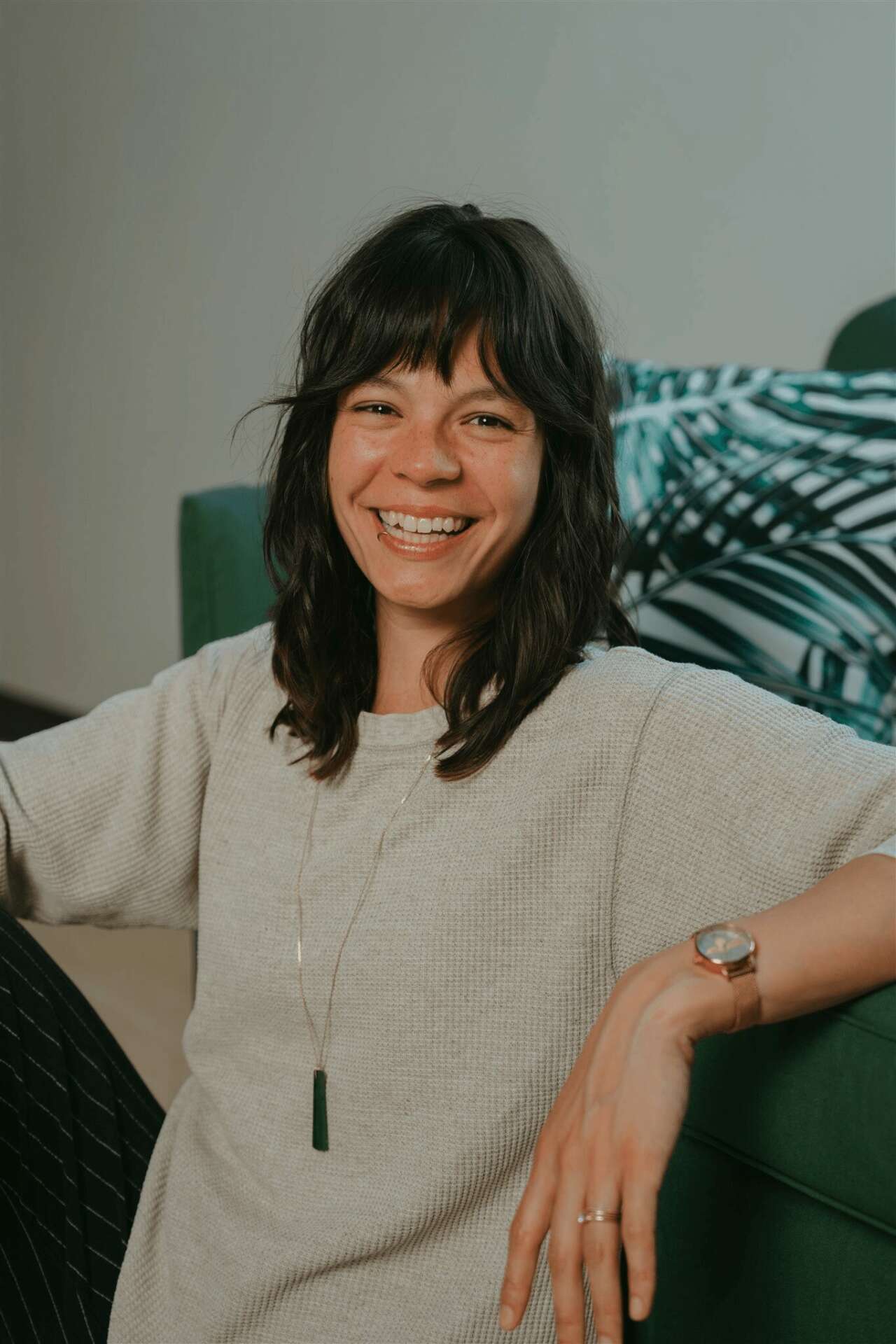We caught up with the brilliant and insightful Samantha Westerwelle a few weeks ago and have shared our conversation below.
Samantha, appreciate you joining us today. Is there a heartwarming story from your career that you look back on?
The impact yoga has on a person is so profound, especially when witnessed over time. Some of my earliest clients have continued to practice with me to this day and one in particular stands out so clearly.
We began our work together with a focus on mobility. Her arthritis in the thoracic area of the spine causes limited range of motion in the neck. Meaning that turning and tilting the head comes with its challenges, one of which being pain. Cheryl was skeptical of alternative healing modalities but with the recommendation from her doctor and physical therapist she decided to give private yoga instruction a try.
I introduced several range of motion exercises from a yoga asana (posture) perspective that paired breath with movement. We were playing with the balance of breathing and more specifically slowing down with the body. Growing up was always an adventure, she described. Cheryl had not really let herself be slow, in fact prided herself on being quick, productive; a go-getter.
With the ever present challenge in slowing down our practice together quickly became focused on understanding the difference between left & right, up & down, as well as forwards & backwards as it relates to where the head is facing in space. A concept known as proprioception. Many people have difficulty with focusing enough to lift the left arm when asked, typically pausing to be sure that it is the left one they’re actually lifting. If not, they instantly raise the right arm out of habit and quickly switch when they realize they mixed up their lefts & rights.
Cheryl, like many others, sees me once a week. More than I am able to visit with most of my friends. We have built a strong connection and I have had the wonderful opportunity to learn about her from more than just a movement perspective. Together we learned that proprioception, and the awareness of its importance, plays a large role in the way someone might lead their life.
For her, the lack of understanding where the body is and how it is moving from moment to moment led to many bruises, falls, injuries and even complete disconnect at times. The bruises and injuries contributed to fears around body image that continued to encourage a further prideful can-do attitude but internally she felt more and more frail.
While our time spent practicing week after week has improved her range of motion and lessened the pain in her condition the big win has been different than either of us anticipated.
These days she feels more confident in her movement moment to moment, she takes on less bodily taxing tasks and instead is more physically active with her newfound strength. She falls and bruises significantly less, in turn feeling less frail.. or ‘OLD’ as she would so boldly say with distain. On an emotional level her fears of aging and self image have mostly dissolved to a place where she can be at peace with her accomplishments rather than dread her next activity.
Cheryl has shared that her understanding and focus on proprioception has changed her life by giving her confidence that she has the tools she needs to live fully. As a practitioner I am honored to have witnessed this change. Her speech, mindset and body have all shifted with the change in her understanding of an embodied life. I couldn’t be more grateful to her dedication to exploring this concept and including me in her journey.

Great, appreciate you sharing that with us. Before we ask you to share more of your insights, can you take a moment to introduce yourself and how you got to where you are today to our readers.
I first found the practice of yoga in college during a music degree while searching for something to help with my breath capacity. After my first yoga class consistency was sort of wave like over the years, going to classes on and off until about 2016 when I began practicing everyday at home.
Later, when I planned a long backpacking trip abroad, it was important to me to attend retreats, visit India and learn more foundation building techniques from the birthplace of yoga. Ultimately, I spent 2 months at a school in the foothills of the Himalayas for a 500 hr yoga teacher training but had no interest in teaching.
Yoga helped me discover habits that were really preventing me from progressing to where I wanted to be in life. From personal relationships, financial decisions, inability to complete something I started – the decision making skills that developed from the self confidence and compassion picked up in asana practice gave me the space to make better choices around these areas in life.
It wasn’t until a few months after returning home from my trip abroad (a year later) that a friend suggested I lead free community yoga classes. That time was precious. Turns out teaching those first few classes birthed a career that was never on my radar.
Not only did I LOVE teaching, I loved learning about yoga. Since that first training in Rishikesh, I have attended at least 1100 more hours in programs that have deepened my understanding of the principles of Yoga Therapy and Ayurveda, it’s sister science.
My focus shifted more towards the one-on-one format after a year of teaching in studios. The practices of Yoga and Ayurveda have great impacts when there is time to explore them. I found this time most readily available in private sessions and clients responded well to the more tailored approach.
While I still teach in a few studios today, I find great fulfillment in building strong connections with people one-on-one.
Currently I offer Ayurvedic Health Consultations, Private Yoga Therapy Sessions and Seasonal Meal Planning Kits.
During an Ayurvedic Health Consultation we discuss your health history and current experiences of discomfort. From this discussion and a short movement assessment I build a protocol that consists of a posture sequence, meal recommendations and daily cleansing practices that would support your health goals.
We would then, over time, build the pieces of the protocol into your daily life. This encourages consistency in the new habits that support your wellbeing. Just the way that I was taught, one practice at a time.

How about pivoting – can you share the story of a time you’ve had to pivot?
It is quite difficult to promote yourself in the yoga industry if you aren’t savvy at clienteling or you are beginning with little to no funds for marketing. Most instructors rely on their studios to promote them and bring people in the door for classes.
What helped me most was having a background in sales. Being able to identify the root of someone’s needs and bring them to a service that suits them comes easy for me. This not only helped in building a client base but also helped in creating services that resonate with those clients.
There are an incredible variety of practices in yoga. At least 6 schools of thought are recorded in its philosophy and those schools of thought branch into hundreds of books with ways of practicing, sharing and receiving the benefits of yoga. With this much variety there is a path for each individual to share.
What’s interesting is sometimes the path you want to share isn’t the path that others receive well from you. I learned this the hard way. When attending yoga classes I gravitated towards vinyasa and hatha styles, the more moving & strength building flows. Naturally these were styles I wanted to offer when I decided to teach.
It was a terrible offering for a soft voiced, stage shy gal who had just graduated. Studio owners commented there wasn’t much energy to my strength style offerings and didn’t hire me at first. Shifting to something more authentic and rich with history like pranayama (breath control) and chanting mantras leading into meditation was quickly turned away by the studios in my area as well because those offerings don’t bring people in the door. I don’t think I landed a teaching job at a studio for 4 months.
Left with the gentle practices like yin I begrudgingly tried to offer a slow flow class. To my surprise and initial dismay students and studio owners alike took very well to this offering. Students shared that my voice was perfect for it, that they actually felt what I described in my cues and that they had the most meditative experiences in my gentle classes.
I meditated. I meditated for a few weeks processing this complete disconnect in my mind between what I wanted to offer and what people wanted to receive from me. This is a big lesson early on in practicing yoga. Removing ego from the picture and being open to what is laid before you.
Walking into the path of sharing more gentle forms of yoga has brought me far in my clientele base. Without that pivot it is unlikely I would have a business. While I have really improved my speaking voice for strong flowing classes now it is because of my confidence building from knowing what it is that helps people to hear me. A gentle, clear and focused guide.
These days yin is my favorite class to offer at studios and the principles of yin permeate all of my private sessions.

Any advice for growing your clientele? What’s been most effective for you?
Understanding funnels. Seems so simple but, like many other full time yoga instructors, I had so many different avenues of income just to stay afloat. Not many of them fed into each other and it left me frazzled. Keeping track of each offering separately and not really knowing if my client base was growing or not.
In the yoga industry there aren’t many front desk staff members to come in and talk to about the idea of trying Ayurveda & Yoga. Most studios are only open 30 minutes before and after each class so the hours aren’t often accessible to someone new. Then if you move into private practice like I did, even LESS of an opportunity to connect with someone at the brick & mortar level.
How do you get people to know who you are, what you do, and ultimately sign up for a private session without having had any frame of reference or ‘test run’?
Funnels. Multiple points of connection that all lead to your main service.
These days I have three points of contact that funnel into each other. The first, group classes at studios. This offering, the broadest part of the funnel, leads people to my workshops (second point of contact). Workshops offer more time for questions and dive deep into concepts that you may have heard about in the studio that relate to yoga asana practice. The middle of the funnel, workshops, is also the space where students will hear more about what I do outside of the studio. These events are typically held near my office so that folks have an easy reference to where they can find me.
Those who attend a workshop are then suggested to join the third point of contact, a retreat with me and fellow like-minded people. Retreats give the opportunity for larger shifts in mindset and processing of stored emotions over time like grief & anger. To name a couple big ones.
The retreat format is at the base of the funnel. The smallest point of contact and the most important. When someone has learned about themselves and felt big shifts it is the best advertising for continuing to work with me.
With the funnel approach I have quantifiable measurements and clear points of entry to my business to reference. How many new people attended my workshops this year? From the studio or outside networking? How many people have attended more than one offering? What’s my conversion rate to private client at each point of contact?
With this data I have been able to see the growth path more clearly and from the feedback at each point in the funnel, make better offerings for clients.
Contact Info:
- Website: https://ypractice.com
- Instagram: Samantha.ypractice




Image Credits
westmoonmedia.com


